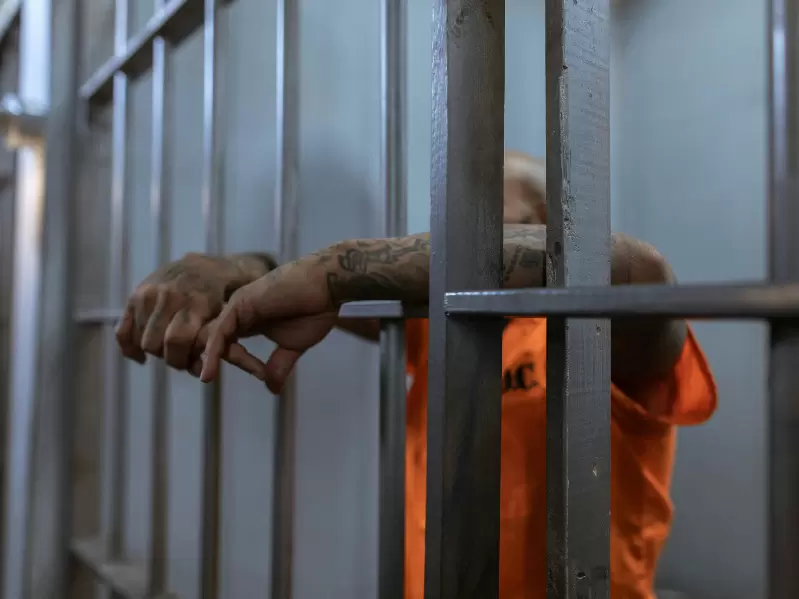Deaths, disappearances, and danger in immigrant detention
Fifteen immigrants have died in immigration detention so far this year.
 Representative image. / Pexels
Representative image. / Pexels
Elsa Guadalupe-Gonzales, 24, was found hanging to death in her cell at the Eloy Detention Center, read the press release on the Immigration and Custom Enforcement (ICE) website. Her death is not an uncommon occurrence. Headlines of many press releases screamed death, many by suicide.
Fifteen immigrants have died in immigration detention so far this year. Ten of them between January and June, making that period the deadliest in recent history, said the experts at an American Community Media briefing.
More than 1,200 people are allegedly missing from the infamous and controversial Everglades facility dubbed Alligator Alcatraz, with families and attorneys unable to locate them.
There are currently close to 60,000 detainees, a record number and the rapid expansion of arrests and detention, combined with diminishing transparency signals a war like situation for immigrants, said Heather Hogan, Policy and Practice Counsel at the American Immigration Lawyers Association.
“The Stewart Detention Center is the deadliest facility in the United States," said Andrew Free, an Atlanta-based lawyer.
ALSO READ: Majority of detained Asian Americans lacked criminal records, study finds
Between 2017 and May 2024, ten people detained at Stewart died in ICE custody. That is the largest number of documented ICE‐detention deaths at any single facility in the USA during that period. As of April 2023, Stewart had been the site of at least 10 other ICE custody deaths before then. As of June 2025, Stewart has seen thirteen deaths in ICE custody since ICE began detaining immigrants there in 2006. This figure includes suicide deaths.
Reportedly the deadliest ICE facility in FY2025, surpassing Stewart for the first time in nearly a decade was Krome Detention Center in Miami. Severe overcrowding led to people being forced to sleep in buses outside the facility. “There were women sleeping in buses in the parking lot and people dying as a consequence,” said Free, who maintains and publishes a database since the beginning of the year of those who've died in ICE custody, consolidating the patchwork of information that ICE maintains about deaths in custody.
“It's very hard for us to get authoritative information in one place.”
What is the true number of people dying in ICE custody?
“I don't actually know,” said Free, who founded #DetentionKills, to support families and communities affected by deaths in DHS custody.
I found hundreds, over 400 unreported deaths dating back to fiscal year 09 in detention.
The Vera Institute’s new “ICE Detention Trends” dashboard / report reveals ICE is using more than 436 sites of detention including local custodial settings, medical centers and other hold rooms.In its public reporting it acknowledged only 180 such sites. It reflects how ICE’s published data systematically undercounts the number of places where it holds people with the consequence of, what Free called, enforced disappearances.
“I did not find those people who died. So, what I fear is there are people who are dying in state or local custody whose deaths are never being reported publicly, and they're never being investigated and recorded.”
Who is dying?
“I've kept and broken down a pivot table of the citizenship information for the people who've died in custody,” said Free.
1 in 5 people who die in ICE custody over time have been from Mexico. Cubans are the second largest demographic to die. Some people who might be recorded as Black may also be Hispanic.
What leads them to kill themselves? A window into the world of the detainees
Hogan, who has worked inside immigration detention facilities, as an asylum officer with USCIS, has conducted screening interviews with asylum seekers in Arizona and California.
“I've talked to hundreds of detained asylum seekers, and I was frequently struck by how they are treated like incarcerated criminals, despite many having no criminal record.”
They are woken up by 3 or 4 am By the time she interviewed them
They were tired and hungry, hardly in a state for a life-altering interview that would determine if they potentially qualified for a hearing in front of an immigration judge.
The system is extremely dehumanizing.
“In Florence, Arizona, for example they shuffled in wearing orange jumpsuits, shackled at the wrists and the feet. They waited in a holding cell all day until they were called for an interview one by one. While waiting, they had absolutely nothing to do and then they were typically fed a meager meal at lunch. They were mocked by the guards who laughed at them. ”
Detainees are referred to as bodies by the contract security guards and ICE officers. This is a common term in incarcerated situations.
Prolonged detention causes widespread mental health issues. Most asylum seekers already have had really traumatizing experiences in their quest to reach the U.S.
“I interviewed somebody who was kidnapped at the Guatemala-Mexico border then held in a brothel and forced to do sex work. This person escaped after about nine months and made it on their own to the U.S.”
Hogan talked to people whose family members were murdered by gang members and cartels, people whose governments have persecuted them, including through imprisonment. These people flee to the US for safety.
The most recent report published in April of this year found that facilities continue to fall short in basic mental health care. There are gaps in suicide prevention and treatment, there are use of force incidents against mentally ill detainees.
Those contemplating suicide, or people who attempt suicide, are often put in solitary confinement. This is similar for members of the LGBTQI plus community; sometimes transgender applicants, HIV positive individuals were also placed in solitary confinement, and that was purportedly for their own protection according to the government.
The UN classifies solitary confinement as torture.
The safeguards and oversight are sorely lacking.
“The federal government is using detention to induce immigrants, refugees, and asylum seekers to give up on their cases and leave the U.S. The government is trying to maximize the punitive nature of detention and make the conditions so difficult that people would rather leave than pursue relief.”
ADVERTISEMENT
ADVERTISEMENT
E Paper
Video



 Ritu Marwah
Ritu Marwah .jpg)












Comments
Start the conversation
Become a member of New India Abroad to start commenting.
Sign Up Now
Already have an account? Login